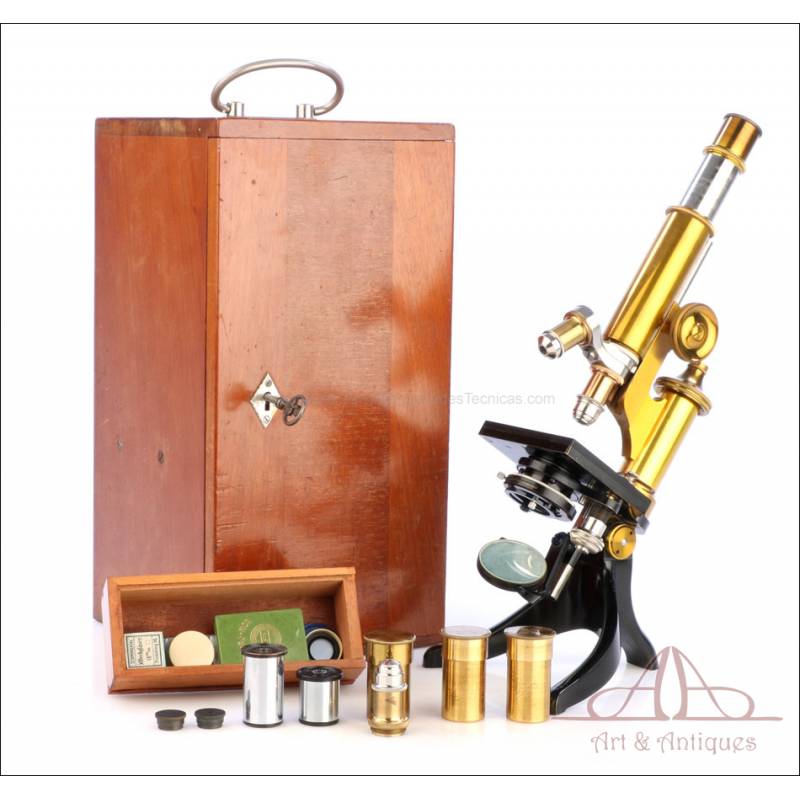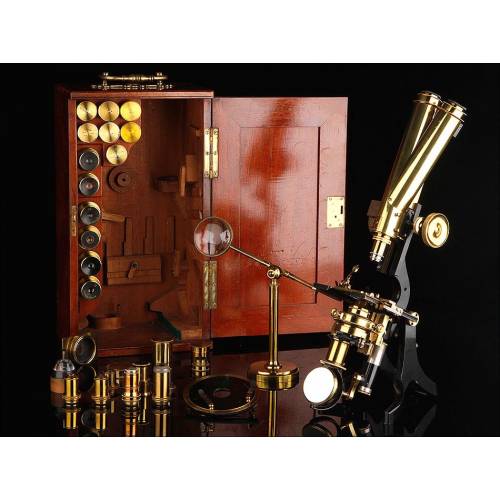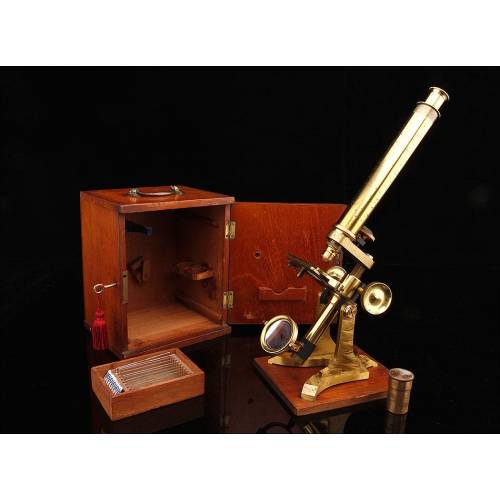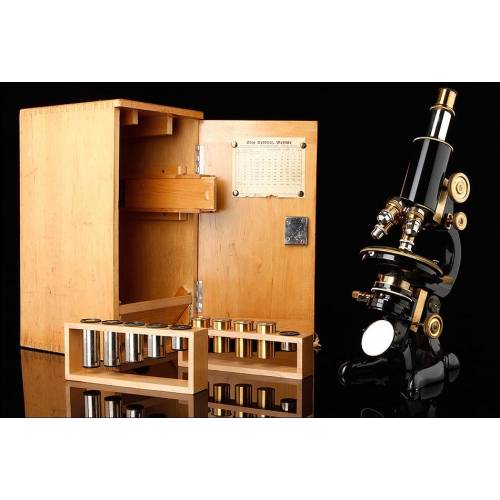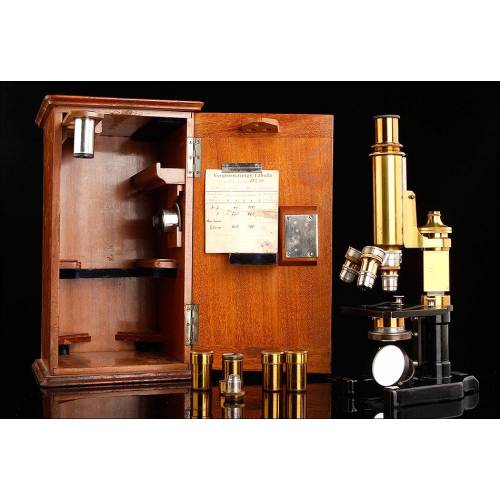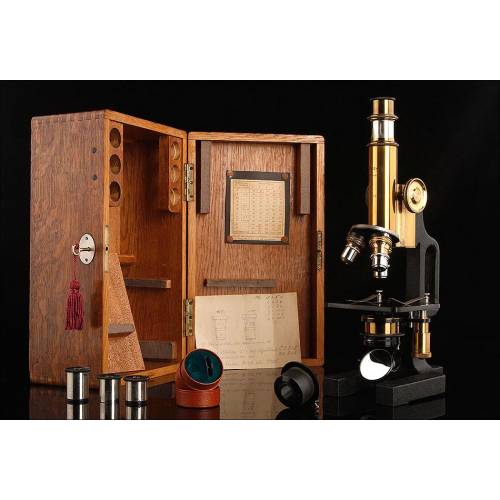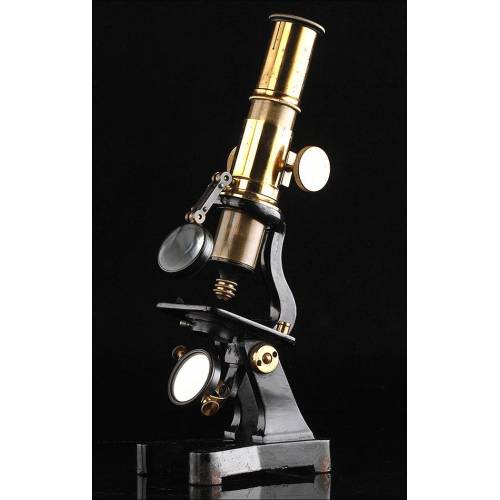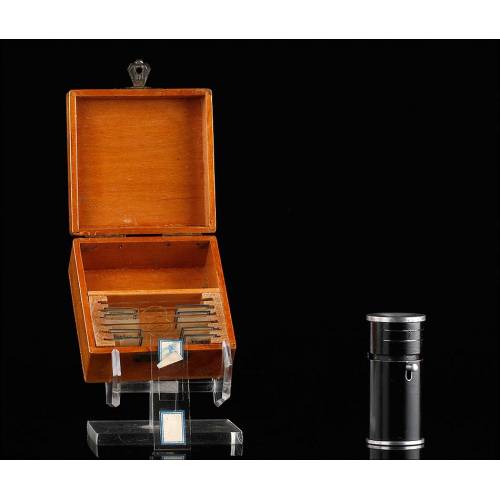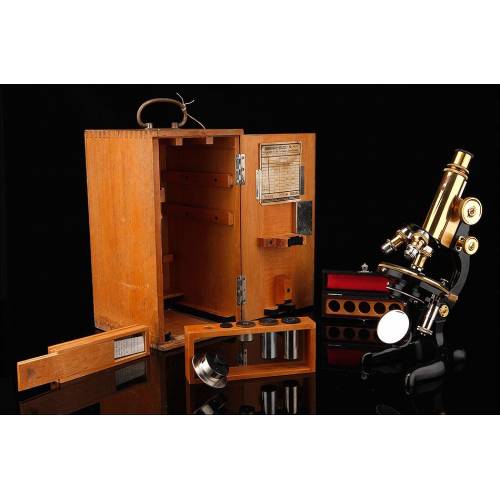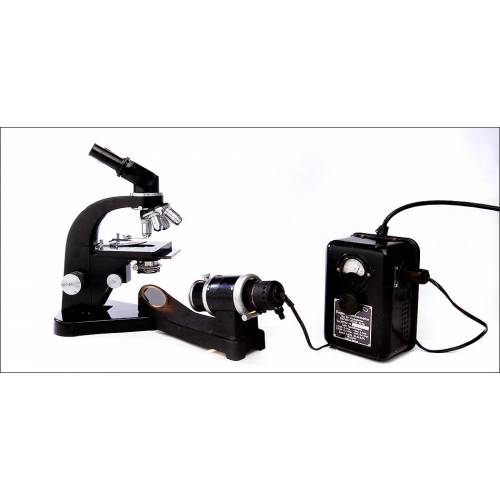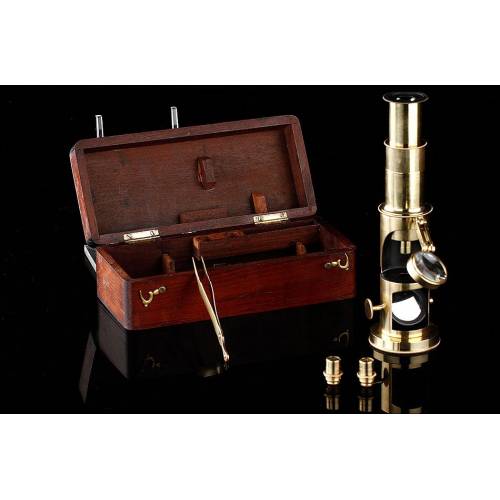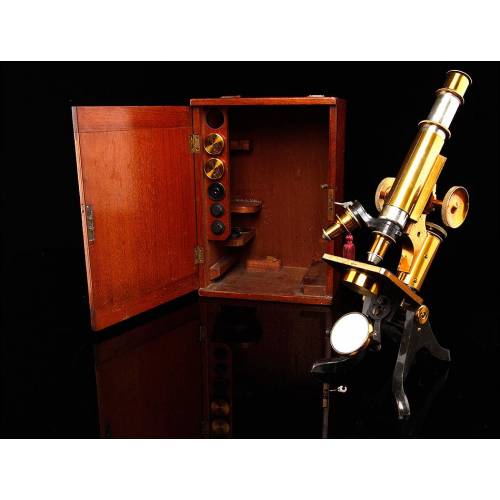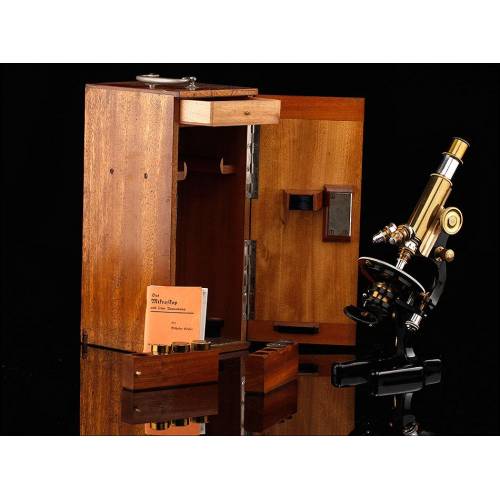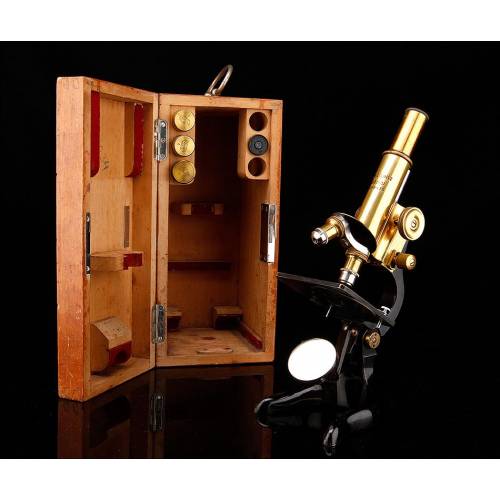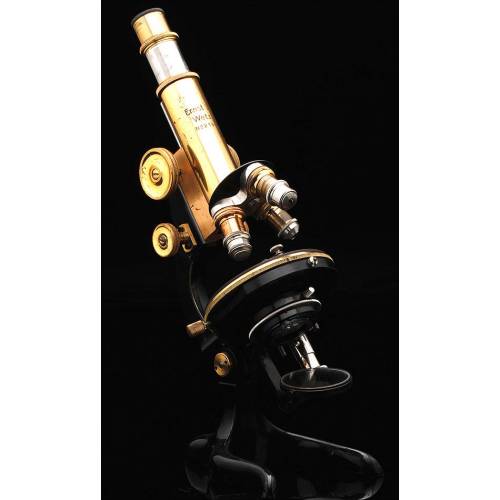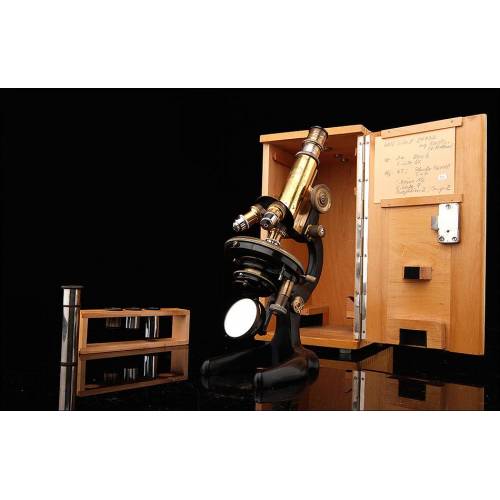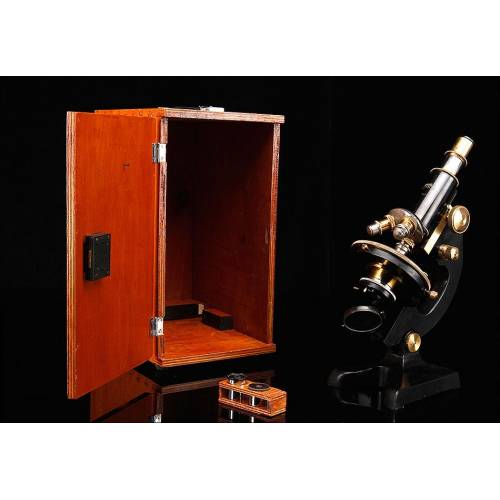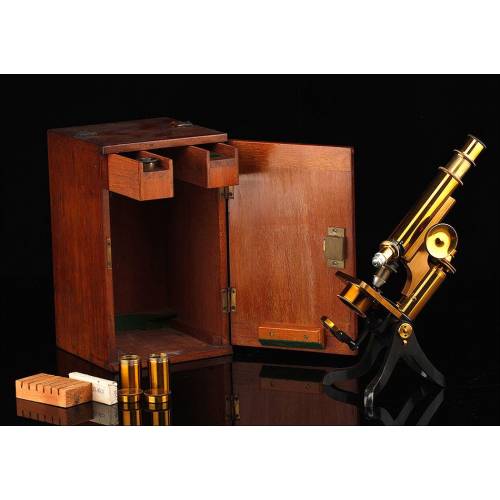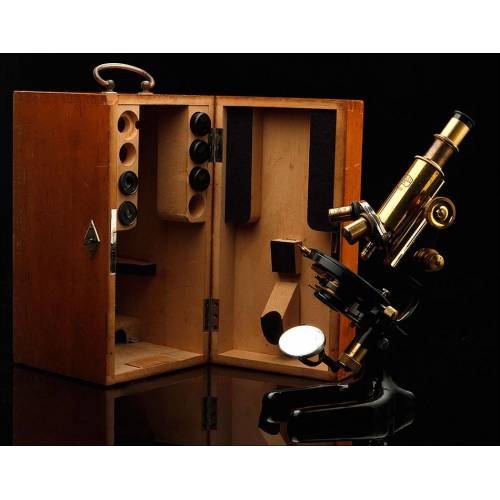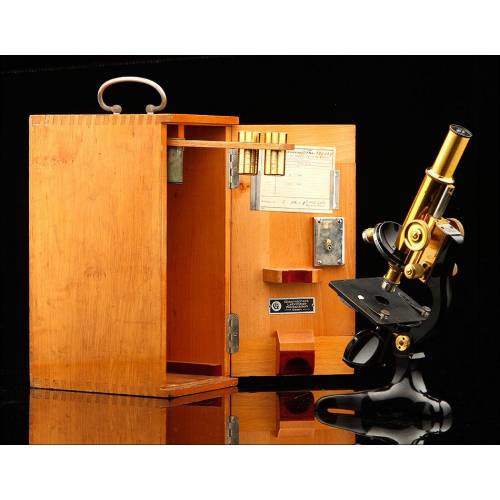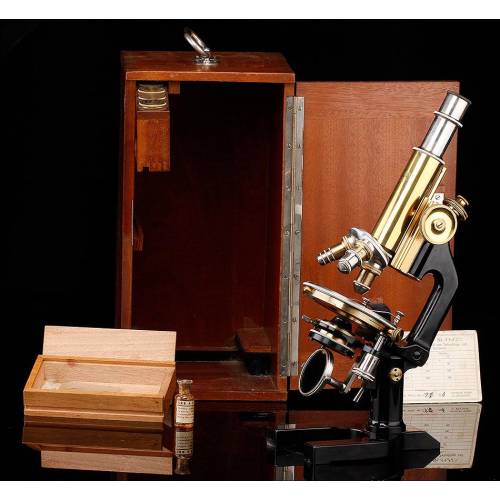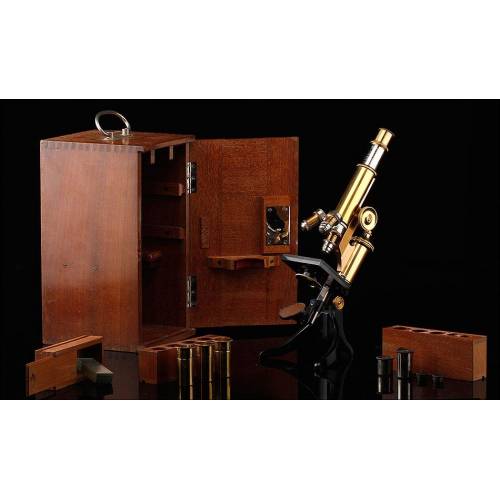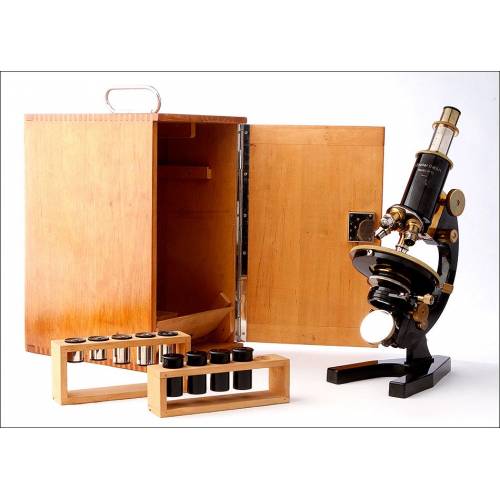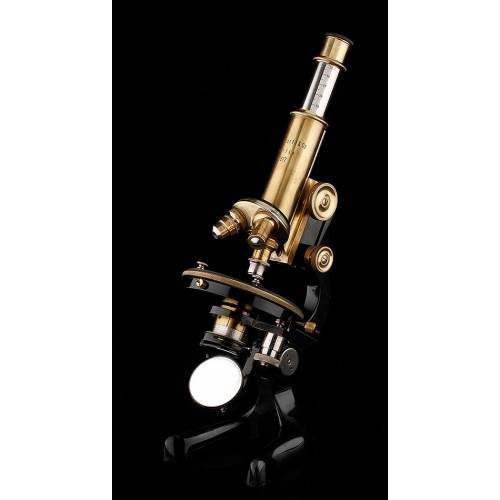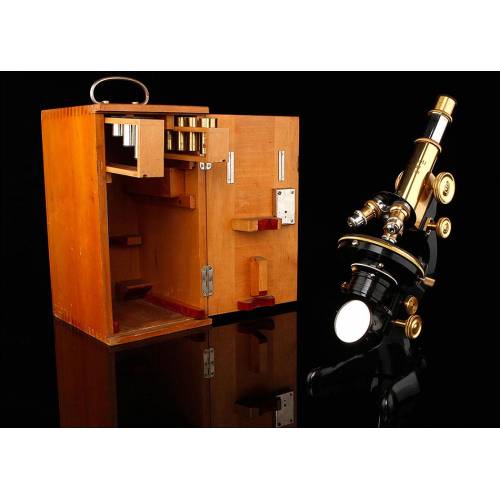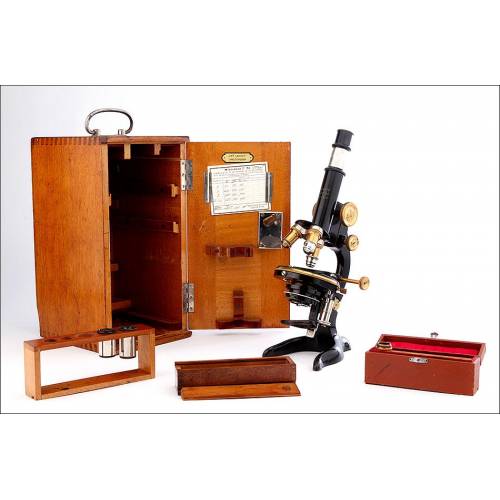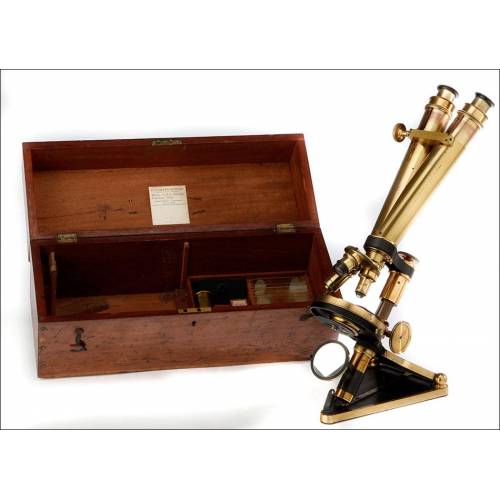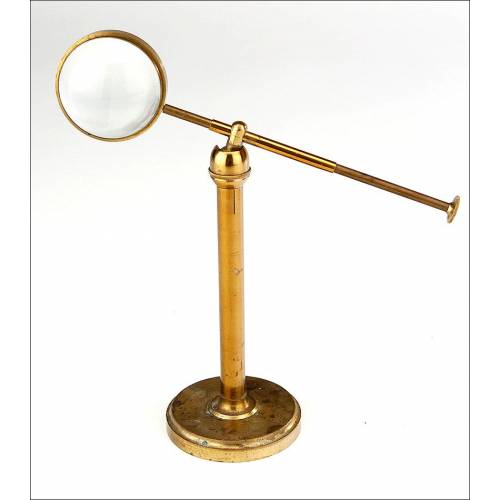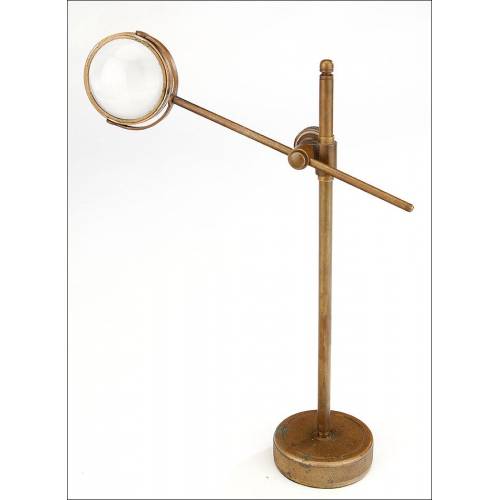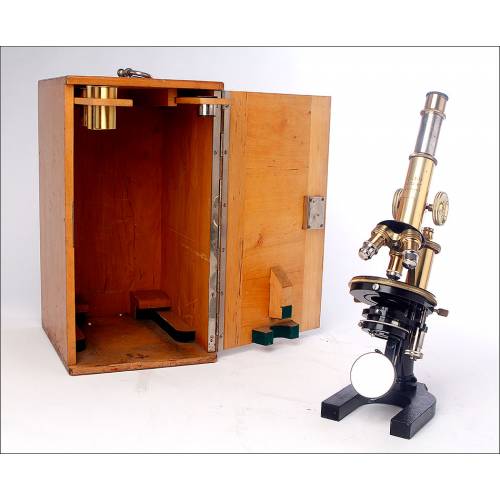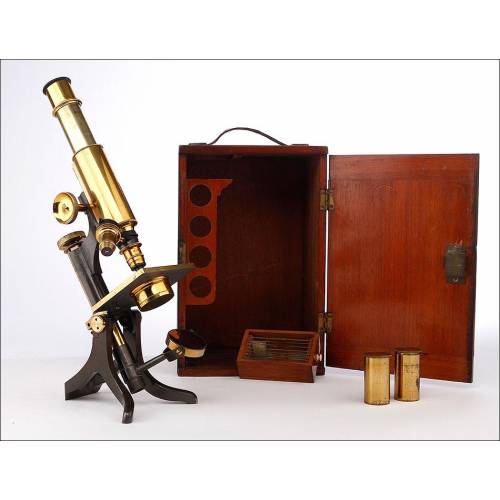D-671
Extraordinary Antique Leitz Wetzlar Microscope. Germany, 1900
Wonderful Leitz Wetzlar microscope in amazing condition. Complete and almost like new.
Sold!
Extraordinary antique Leitz Wetzlar microscope made in Germany exactly in the year 1900, according to serial number, in striking condition and perfect working order. This is a real museum piece which, though being more than 120 years old, has survived to our days almost like new. It is composed of a black-enameled metal foot and a brass and chromed-metal top part. At the foot we can see the engraved serial number 54531 with the manufacturers name, E. LEITZ WETLZAR. This number tells us that the microscope was made exactly in 1900. The brass component parts preserve the ancient protecting lacquer and remain shiny and even, just like the chromed-metal ones and the satin black foot. The rack-and-pinion system is in perfect condition and shows a smooth operation, just like the rest of the mobile parts. The microscope comes in its original storing case, a gorgeous hand-made solid-mahogany box. Inside we find a set of 3 objectives and 3 lenses signed by the maker, as well as a paper sheet with a typed description of the equipment. There is also a small mahogany box with accessories and products to prepare samples, all of them original from the time. The lock-and-key set is in good working order. This extraordinary antique Leitz Wetlzar microscope is a superb piece, worthy to shine in a science museum or a great private collection. Dimensions: Foot: Side: 5.51 in / 14.5 cm. Height: 13.78 in / 35 cm.Ernst Leitz Wetzlar - History The beginnings of the famous optic material manufacturing company named Ernst Leitz Wetzlar can be found in the first half of the 19th century, when the mechanic and selft-taught mathematician Carl Kellner founded the Carl Kellner Optisches Institut in Wetlzar, Germany. After his early death his widow maintained the business, and in 1864 the mechanical engineer Ernst Leitz entered the company. Just five years later, Leitz took control of the firm and changed its name for Ernst Leitz Wetzlar. Leitz led the company to success after introducing improvements such as serial production, raising sales volume rapidly after 1871. Leitz microscopes included technical improvements that increased their quality; by the late 19th century the company already had a worldwide reputation. Ernst Leitz died in 1920 and the leadership of the firm passed to his son. As well as for their microscopes and optic material, Leitz became hugely famous for their famous Leica cameras (abbreviation of Leitz Camera).

